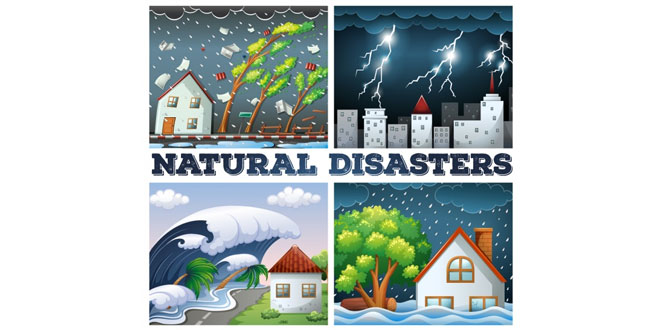Question: Distinguish between the following:
Answer: 1. Focus and epicenter:
Focus:
- Focus is the point below the surface of the earth where an earthquake originates.
- This is the point where rocks first rupture or break when an earthquake takes place due to movement of bedrock and release of energy in a violent form.
- This point is also called hypocenter, and this is from where seismic waves travel to all other directions. The waves are extremely forceful at the start but slowly die down. These waves can make earth vibrate like a tuning fork.
Epicenter:
- As focus cannot be seen by people, the concept of epicenter was introduced to let people visualize the focus from where the earthquake originated.
- This epicenter is a point directly above the focus and is situated on the surface of the earth.
- Thus for practical purposes, epicenter is taken to be the center or the origin of earthquake though the point below the surface of the earth remains the spot where it originated.
2.Tsunami and cyclone:
Tsunami:
- A tsunami develops when a large mass of water is displaced. This can be caused by an undersea earthquake or a volcanic eruption. When an undersea earthquake occurs it causes large areas of the sea floor to rise or subside. This leads to the occurrence of huge waves. Tsunami travels at a high speed of about 500 to 1,000 km per hour.
- Although tsunamis are not frequent, they can occur at any time of the year.
Cyclone:
- A cyclone develops when a low pressure area is surrounded by high pressure. Thus, the winds blow towards the centre at a very high speed and destructive in nature. These winds are accompanied by heavy rains and are often disastrous.
- The areas which are prone to cyclones in India are West Bengal, Odisha, Andhra Pradesh, Tamil Nadu and coastal areas of Gujrat and Maharashtra.
3. Flood and drought:
Flood:
- Floods generally occur due to heavy rainfall, or when river water flows beyond its normal course.
- About one-eighth of the total area of our country is estimated to be flood-prone. Most of it is in the plains of northern India.
Droughts:
- Extreme shortage of water in a region is called drought. It affects human beings, animals and agricultural production. The drought-prone areas are those that experience low and variable rainfall. More than 70 per cent of the total cultivable land in India is drought-prone.
- The drought-prone areas of India are Rajasthan, Gujrat, western Odisha, Rayalaseema in Andhra Pradesh, Telangana, Chhattisgarh, Jharkhand, central Maharashtra, interior Karnataka, West Bengal, Tamil Nadu, Punjab, Harayana, Bihar and Uttar Pradesh etc.
 Class Notes NCERT Solutions for CBSE Students
Class Notes NCERT Solutions for CBSE Students


